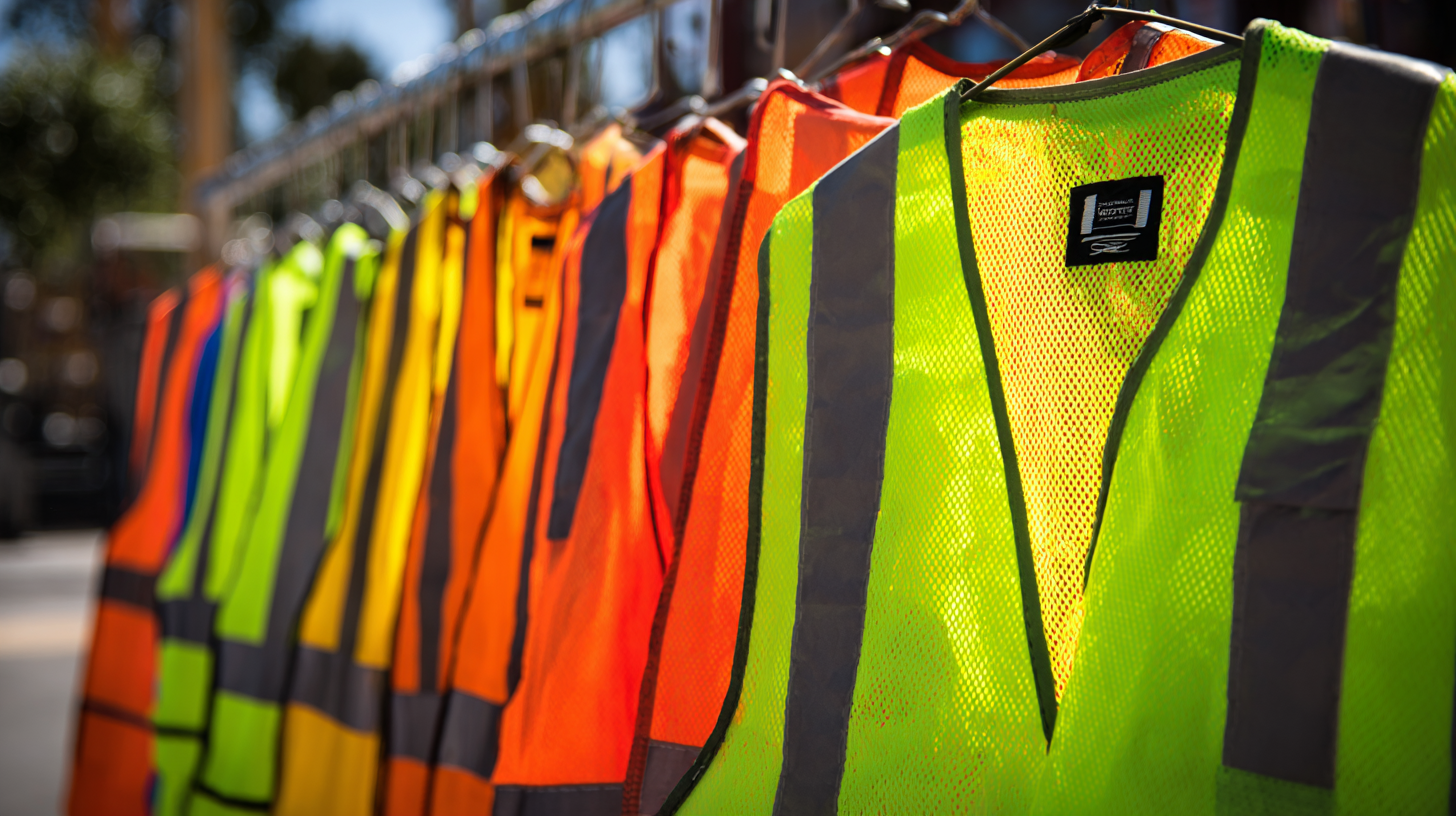In today's fast-paced and diverse work environments, ensuring safety while maintaining comfort is paramount, especially in industries such as construction, manufacturing, and transportation. The use of Hi Vis Vests, designed to enhance visibility and reduce the risk of accidents, has become a crucial element of workplace safety gear. According to the Occupational Safety and Health Administration (OSHA), high-visibility clothing can decrease the likelihood of accidents by up to 70%, making it essential for workers exposed to vehicular traffic or hazardous conditions. As companies strive to create safer workplaces, understanding the various features and specifications of Hi Vis Vests—such as material, fit, and certifications—becomes increasingly important. In this blog, we will explore top strategies for selecting the best Hi Vis Vest that combines safety with comfort, ensuring optimal performance in any industry.

When selecting the right hi vis vest for optimal visibility and safety, it’s essential to consider several key factors. First, the fabric and color play a crucial role in ensuring visibility. Vests made from high-quality fluorescent materials in colors such as neon yellow or orange can significantly enhance visibility in various lighting conditions. Additionally, consider the reflective strips on the vest; more reflective elements improve the chances of being seen, especially in low-light situations. The placement and size of these strips can also impact their effectiveness, making it vital to choose a design that maximizes reflectivity without hindering mobility.
Comfort is equally important when choosing a hi vis vest. A well-fitting vest allows for freedom of movement, which is essential for those frequently active in their roles, such as construction workers or road crews. Look for vests that offer adjustable features, such as side straps or stretchy materials, to ensure a snug yet comfortable fit. Furthermore, prioritize breathable fabrics that wick moisture away from the body, as this can significantly enhance comfort during prolonged use. By focusing on these factors—visibility, reflective elements, and comfort—you can select a hi vis vest that meets the demands of any industry while ensuring safety on the job.
When selecting a high visibility (hi vis) vest, understanding the different types of materials available is crucial for ensuring both safety and comfort across various industries. Hi vis materials predominantly include fluorescent fabrics that enhance visibility in daylight and retroreflective materials that reflect light in low-light conditions. According to the American National Standards Institute (ANSI), these materials are rated based on their reflective qualities and visibility, with Class 2 and Class 3 garments providing the highest standards for workers in hazardous environments.
Comfort is equally important, as workers may have to wear these vests for extended periods. A report from the Occupational Safety and Health Administration (OSHA) highlights that discomfort can lead to decreased productivity and increased risk of accidents. Lightweight, breathable fabrics such as mesh or moisture-wicking polyester can significantly improve comfort levels while maintaining visibility. Furthermore, features like adjustable straps and ergonomic designs can enhance fit and functionality, which are essential for workers engaging in physical activities. Choosing the right hi vis vest, therefore, not only protects against potential dangers but also supports the wearer’s overall well-being and efficiency on the job.

When selecting a high-visibility vest, it’s essential to consider the relevant safety standards that govern its design and performance, particularly ANSI (American National Standards Institute) and EN (European Norm) standards. These guidelines ensure that vests are adequately bright and reflective to keep workers visible in various environments.
ANSI standards outline different classes of vests based on the intended use and working conditions, allowing industries in the U.S. to choose appropriate options that meet safety requirements. Understanding these classifications helps employers fulfill their responsibilities while providing workers with the necessary protection on the job.
In Europe, the EN standards serve a similar purpose, offering a framework for visibility and safety that aligns with various industrial needs. EN ISO 20471, for instance, is particularly focused on the visibility of workers, specifying design requirements for garments in different environments.
Companies operating across different regions need to assess both ANSI and EN standards to ensure compliance and maximize safety in their workplaces. By carefully evaluating these standards, organizations can provide proper hi-vis vests that not only meet legal requirements but also enhance comfort and usability for their employees, ultimately contributing to a safer work environment.
When selecting a hi vis vest, proper fit and sizing are paramount in ensuring both safety and comfort. A vest that is too tight can restrict movement, leading to discomfort and potentially hazardous situations, especially in environments that require physical activity. Conversely, a vest that is overly loose may ride up or snag on equipment, diminishing visibility and increasing the risk of accidents. Therefore, understanding how to measure and choose the correct size can significantly enhance the effectiveness of the vest in keeping workers safe.

Additionally, consider the layering of clothing underneath the vest. Depending on the industry, workers may need to wear thermal or tactical gear that can affect sizing. Opting for adjustable features, such as side straps or elastic materials, can provide the flexibility needed to accommodate varying layers while maintaining a secure fit. Finding a balance between snugness and comfort is essential, as this will encourage consistent use of the vest, ensuring that safety remains a top priority in any workplace setting.
When selecting a Hi Vis vest, it's essential to consider additional features beyond just color and size. Pockets are a crucial aspect; they provide convenient storage for tools or personal items, ensuring that workers have everything within reach. Some vests come equipped with multiple pockets of varying sizes, which can be particularly beneficial in industries where quick access to equipment is necessary. A well-designed pocket system can help keep items organized, allowing for smoother workflow and increased efficiency.
Breathability is another key feature to evaluate when choosing a Hi Vis vest. In warm environments, a vest with breathable fabric can significantly enhance comfort levels, allowing for better air circulation and moisture wicking. This consideration is particularly important for outdoor workers who must endure long hours in the sun. Vests made from mesh materials often offer greater ventilation, reducing heat retention and helping workers stay cool throughout the day.
Lastly, reflective elements are vital for visibility in low-light conditions. Look for vests that incorporate strategically placed reflective strips or panels that comply with safety standards. These features not only increase safety for workers on job sites after dark but also add an extra layer of protection during early morning or evening hours when visibility is often compromised. By carefully evaluating these additional features, you can make a more informed choice ensuring both safety and comfort in your work environment.
